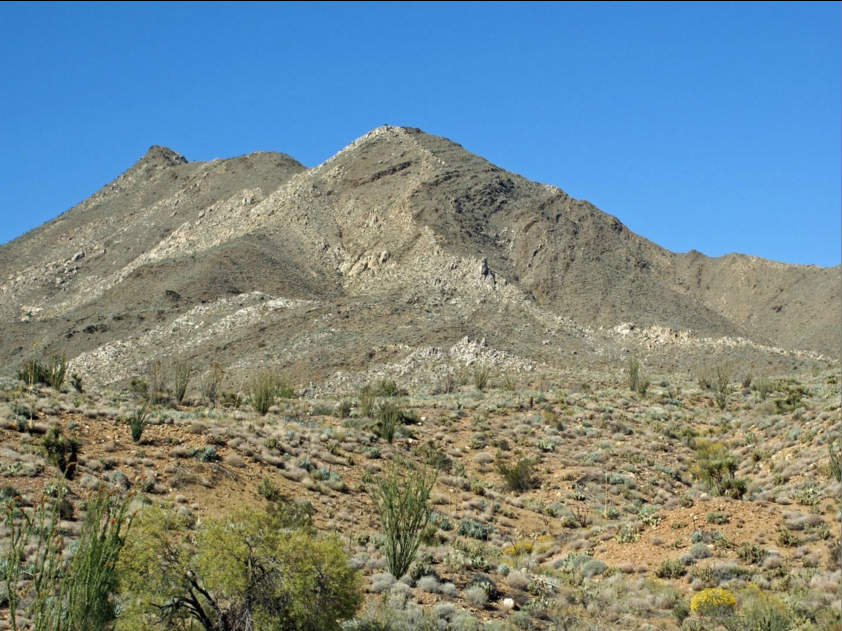Geology and Minerals
The various minerals, clays, pigments, and other natural geological elements in the region play a large role in traditional Kumeyaay culture and cosmology. In the story of Chaup, the two sisters painted two new born boys (both named Cuy-a-ho-marr) with red pigment derived from clay that could be found near a bathing pool. When the boys grew older they procured white clay from the east and black clay from the west—the signs of sorrow and mourning. Mica mixed with thick black mescal juice was used a face paint on keruk images for the death ceremonies (DuBois 1905:626). In this sense clays and pigments are not seen as just physical elements—they are part of a deeper understanding of the earth and the land. This is reflected in the fact that the Kumeyaay word for land/earth and for the human body is the same: Mat/’Emat.
Quartz and quartz crystals are believed to possess special powers and if mishandled or disrespected can cause injury or death to its owner. Some arrowpoints made from quartz were known to have the ability to find the prey being sought while others might be placed in the corners of a dwelling (ewhaa) to ensure peace and tranquility. Some spiritual leaders or kuesaay might possess small pebbles or “power pebbles” that were carefully guarded. It is thought that these stones contained their own spirit, their own power and in some cases might wander away from their owner.
One of the most prized minerals from the region and from the Channel Islands is soapstone also known as steatite. This soft rock was quarried from Stonewall Peak and also from a place at Los Conejos and used to manufacture arrow shaft straighteners, beads, sucking/healing tubes, smoking pipes, heating stones, and amulets. One possible Kumeyaay word for this easily carved and shaped stone is teaxon or teaxon. According to one early account, ground up teaxon could be used to ensure success in running races (JPH:1923). Sucking/healing tubes from steatite were prized by kuesaay and are believed to have fantastic power. The location and use of such tubes was closely guarded to ensure that sickness and even death did not come to the uninitiated or unaware.
Clay is commonly thought of as the basis for Kumeyaay ceramic objects such as cooking vessels, water canteens, plates, effigies, and smoking pipes. But white and gray clay from certain sources provided face and body paints for important ceremonies. Harrington reported that well into the twentieth century Kumeyaay from the Warner’s Ranch area (Tahwi and San Ysidro) would stop at Mataguay Creek to obtain special clay. While there they would adorn themselves and appear at San Ysabel ceremonies fully painted (Harrington 1925).
Obsidian, the glassy black or red volcanic rock used to fabricate arrowpoints, wands, amulets, and knives occurs throughout California and Baja California. The most common source for obsidian is Obsidian Butte along the shore of present-day Salton Sea. Geographically exotic sources of obsidian include Cosa Hot Springs hundreds of miles to the north and San Felipe in Baja California.

